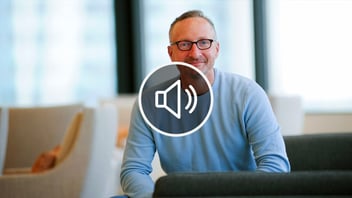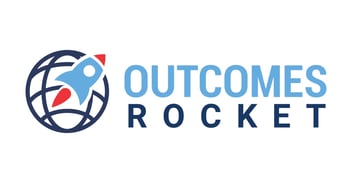Joshua Titus Discusses Healthcare Consumerism on The Futurist Podcast
In the newest podcast episode from The Futurist podcast with Doctor Awesome, Joshua Titus, CEO at Gozio Health talks about consumerism in healthcare and why mobile engagement plays a big role in addressing patient expectations.
You can both watch and listed to the interview here.
And, here are some snippets and quotes you might find interesting:
Access
People want to feel like they have a hand in selecting when and where they receive care and who they receive it from.
Let’s take Piedmont for example, “I want a Piedmont physician to see me. I’m thinking of ear, nose, and throat. If they could speak Spanish, that would be great. Near my house is awesome. If I could do that later this afternoon, I would book it. All those avenues of care are open to me. Is it urgent care? Is it quick care? Is it a primary care physician? There’s primary care at 3:00. I’ll take that slot. It’s a Piedmont doc. I know they’re great. His name is this.” The last step in the journey is choosing the actual physician.
Some of this is anecdotal as much as it is backed up by analytics but you’re not wrong. The slight difference is that if you think of healthcare in general as a funnel, at the top, it’s very broad and low-acuity, “I’ve got an earache. I need to see someone. They’re going to assign some antibiotics. I’m going to get the script filled.” As the acuity grows and things become more serious, now you are talking, “I want the best doc I can possibly find.” The way the systems are viewing it is if I can make a low lip to that funnel so that the entrance into my system is very low-friction, easy, close by, convenient, and all those things that we get out of interaction with mobile, I’ve got you in then.
You see that primary care guy. He takes a look at you and says, “You need to see this.” There’s the referral happening. You’re coming down the funnel. The level of acuity is going up. You’re going to be pickier about who you see but likely, and this is our hope and the data that we see, when you do that search for additional care or search for that specialist, you remain within the system that originally saw you because it was so easy and frictionless to get into it. That’s how our clients have learned to see it. I don’t disagree with you. If you or I have a big procedure coming up, we want the best work and doc we can find. Insurance folds into it. It needs to be paid for but we want the best care we can find.
If it’s something relatively minor, we want convenience. Here’s what’s interesting in general, and this is zooming way out for a second. At every turn, we have traded quality for convenience. MP3s are not as good as a CD. However, we happily switched them out. The videos that stream to your TVs are not as good as Blu-ray but they sure are convenient. You click on it, and there it is. For the low-acuity stuff, convenience trumps the overall skill level, assuming that you meet a minimum bar. I’ve passed my boards. I’m qualified. There may be people slightly better than I am in this particular area but I’m good enough to get done what needs to be done, to start with.
Wayfinding
Our technology is patented. We can locate a device indoors with accuracy. The last time we measured closely, it was about 4.25 feet. Call it roundup 6 feet or 2 meters. It’s extremely accurate, much more accurate than GPS, especially given that GPS doesn’t work indoors. We can find people. You can imagine a lab probably out in Santa Clara somewhere when they first integrated GPS into a smartphone. You mash these two things together. You know that it probably printed out latitude and longitude on the screen.
The engineers were high-fiving, “The job is done. Look at that. It printed out this text here. I can’t imagine it being any cooler than this.” Those folks, even though it was such an achievement, couldn’t have fathomed how we use location now with Google, Waze, and Tinder. They weren’t thinking about the fact that I know where I am, where other people are, and the things that I can do with that location as a filter to say, “I want to see stuff around me.” They were high-fiving because they got a blue dot in the right place. We are pretty much right there on the indoor mapping or wayfinding thing.
I can pull out a blue dot within four feet of where you are. I can do navigation. I can understand where you should go. I know that you can’t go straight to X-ray, which is called imaging. I helped you out there when you searched for it but we have to go to registration, and then we get to go down to imaging. I can understand a level above in terms of wayfinding and navigation but that’s about it.
Likewise, the folks who couldn’t imagine what you could possibly do beyond the blue dot will equally be surprised at what we do over the next year, 3 years, and 5 years when your phone knows a lot about what’s around you in a way that brings context and can make personalized recommendations or give you advice. Imagine the stuff that’s going on with ChatGPT now combined with location information. It was your Brainiac tour guide that was with you if that’s what you wanted.
Dr. Awesome and Joshua discussed a lot more and you can hear it all here.


